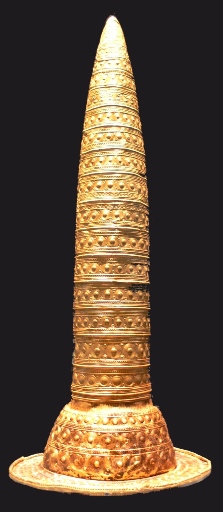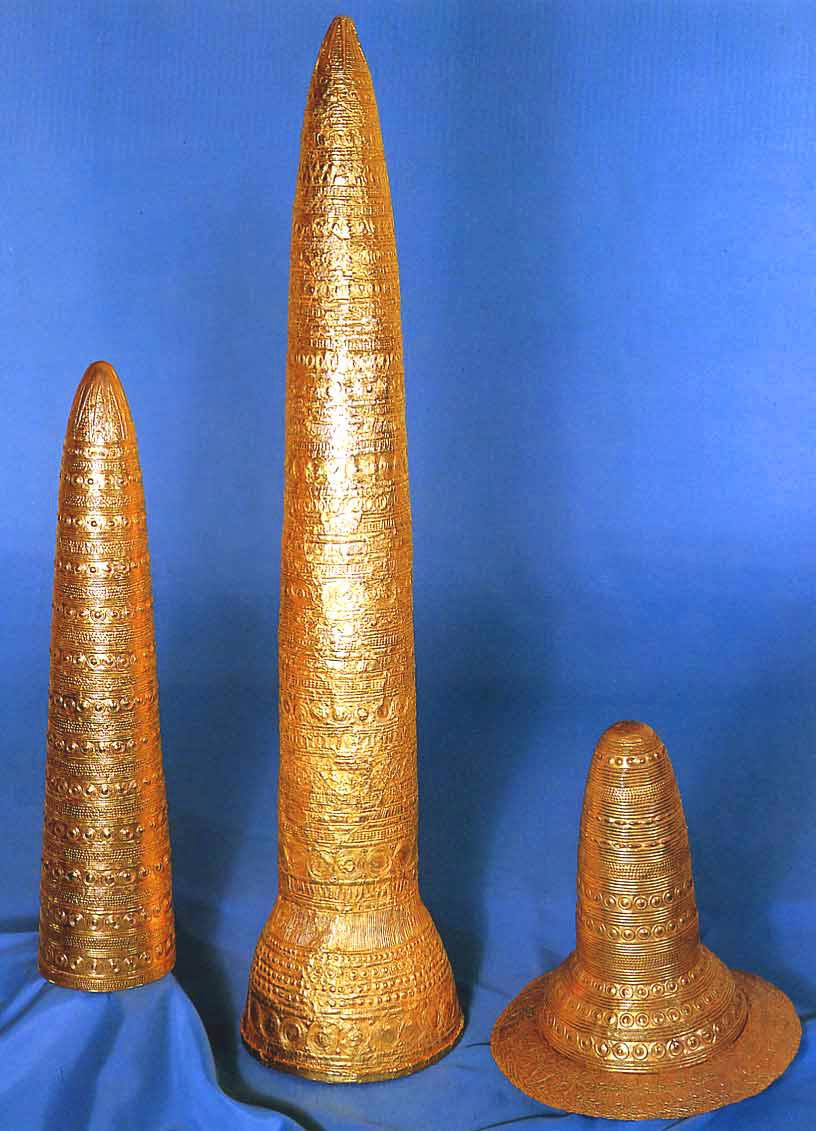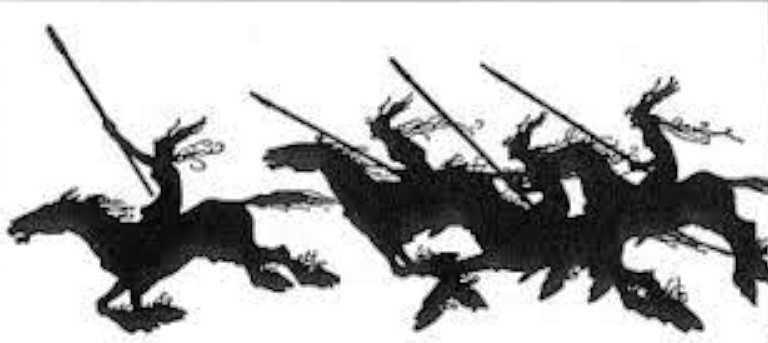The Scorpio and Orion Myth
by Peter Krüger
©2013
[Germanic Astronomy]

"But the whole of the constellation (Scorpio) was put in the sky, it is said, for the following reason: Orion since he used to hunt, and felt confident that he was most skilled of all in that pursuit, said even to Diana and Latona that he was able to kill anything they produced. Earth, angered at this, sent the scorpion which is said to have killed him. Jove, however, admiring the courage of both, put the scorpion among the stars, as a lesson to men not to be too self-confident. Diana, then, because of her affection for Orion, asked Jove to show to her request the same favour he had given of his own accord to Earth. And so the constellation was established in such a way that when Scorpion rises, Orion sets."
The story can be traced back to Hesiod (c. 8th or 7th B.C., preserved at Pseudo-Eratosthenes Catasterismi Frag. 32, Trans. Evelyn-White):
"Being disappointed, then, in his search for the king, Orion went away to Krete and spent his time hunting in company with Artemis and Leto. It seems that he threatened to kill every beast there was on earth; whereupon, in her anger, Ge (the Earth) sent up against him a Scorpion of very great size by which he was stung and so perished. After this Zeus, at the prayer of Artemis and Leto, put him among the stars, because of his manliness, and the Scorpion also as a memorial of him and of what had occurred."
1685 Daniel Seiter
Diana (Diana) above Orion's Corpse
The history of the
constellation Scorpio goes back at least to Babylonian/Sumerian times. It is
worth mentioning that in Sumerian cuneiform the name for Scorpio was
MUL.GIR2.TAB. The combination Gir-tab can be translated as ‘sharp
weapon’ or ‘burning sting’ – a reference to the scorpion’s stinger. The GIR2
sign depicts a sword or dagger. This has led to the Scorpion being called the
‘Sword of Heaven’. (Gavin White, Babylonian Star-Lore).
It seems that the stinger of Scorpio indeed appears in many Germanic tales in the shape of a mystic sword (Mimung, Balmung, Hrotti, etc.). The forging of this sword, for example, is told in Thidrekssaga af Bern, as part of a competition between the smiths Velent and Amilias, concerning which of them is the better smith. Amilias is advised by king Nidung to forge a helmet and suit of armor, within the space a year, while Velent forges a sword. On the last day of the year, Velent with Mimung his sword (‘sverð') easily cuts through the helmet (‘hjálm') and suit of armor (‘brynju', ‘brynhosur', ‘harnisk') of Amilias, killing him.
The suit of armor seems to be nothing other than the constellation Orion in its characteristic form consisting of seven main stars forming a belt, shoulders and feet. Another interesting match occurs between the Scorpion-Orion myth and the Velent–Amilias story. In parallel pairs of 'Scorpion and Orion' and 'the sword Mimung and the suit of armor‘ are placed into the sky by the gods for the same reason: as a warning to mankind that "pride goeth before the fall."
As quoted above, the Astronomica of Hyginus attributes the creation of the constellation Scorpio to Earth, who sends the scorpion to kill Orion after he brags to Diana and Latona that he is able to kill anything they can produce. Jove, however, admiring the courage of both, placed "the scorpion among the stars, as a lesson to men not to be too self-confident." Similarly, in Thidrekssaga af Bern:
|
Nú þrýstir Velent svá fast sverðinu ok dregr við, at sundr nam hjálminn ok höfuðit ok brynjuna ok búkinn allt til beltisstaðar, ok lýkr svá lífdögum Amilias. Nú mælti margr maðr á þessa lund, at þar sem maðr setr dramb sitt hæst, at þat kann lægst at leggjast. |
"Then Völund, pressing the blade,
requested that he would hold himself in readiness ; but, before
Amilias could pay attention to what he said, the blade passed
through his body, and the two halves of Amilias fell from the
seat. The crowd exclaimed that the fall of Amilias was a proof
that a man may be near his end at the moment that he displays
the most pride and confidence.“ (Campell translation) |
The sword Mimung not only slices through Amilias' shining armor, but also cuts through his helmet. The latter may refer to the constellation Taurus, the bull, setting at the same time as Orion. Taurus only depicts the head of a bull as we can read in Aratus von Soli:
"Very lifelike are his signs; so clearly defined his head: not by another sign would one mark the head of an ox, since in such wise those very stars, wheeling on either side, fashion it."
In Sumerian cuneiform Taurus is
known as MUL.GU4.AN.NA, meaning ‘the bull of heaven'. The sign GU4
depicts the (horned) head of a bull. Anna means 'of heaven.' The same
constellation is also named MUL.GIS.DA, ‘the bull's jaw' and, more
interesting, MUL.AGA.AN.NA, ‘the crown or tiara of heaven'. These tiaras
are depicted very often in Babylonian art and normally look like horned
helmets. Such tiaras were also found in Germany like the ‘Berliner
Goldhut' or the ‘Goldhut from Ezelsdorf' (comparable to the Mesopotamian
tiaras even they have no horns), both of them used for
calendary/astronomical functions.
 Berliner Guldhut |
 Goldhats from Avanton, Westfrankreich: from Ezelsdorf-Buch (Nürnberger Land) and Schifferstadt, Rheinland-Pfalz |
In comparative terms, we could summarize the Amilias tale as: “at the rising of the stinger of Scorpio (Mimung), Taurus (the helmet) and Orion (the suit of armor) set” – a clear parallel to the Scorpion-Orion myth.
One part of the constellation Taurus is the asterism of the Pleiades, a group of seven stars known in German as the Siebengestirn ('Seven Sisters'). The Pleiades appear in Greek sources in close relation to Orion:
Hesiod, Works and Days, p. 618 ff
:
"But when the Pleiades and Hyades and strong Oarion (Orion) begin to set [i.e. at the end of October], then remember to plough in season. But if a desire for uncomfortable sea-faring seize you; when the Pleiades plunge into the misty sea [i.e. towards the end of October] to escape Oarion's rude strength, then truly gales of all kinds rage."
Pindar, Nemean Ode 2, p. 10 ff.
(Trans. Conway) (Greek lyric c. 5th B.C.):
"For near the Pleiades, those mountain maids, needs must Orion follow close behind [i.e. amongst the constellations]."
Quintus Smyrnaeus, Fall of Troy
5. 367 (Greek epic c. 4th A.D., Trans. Way):
"The Pleiades [a constellation of seven Nymphs], fleeing adread from glorious Orion, plunge beneath the stream of tireless Okeanos."
At Aratus of Soli we
find the following description of the Pleiades:
"Near his left thigh move the Pleiades, all in a cluster, but small is the space that holds them and singly they dimly shine. Seven are they in the songs of men, albeit only six are visible to the eyes. Yet not a star, I ween, has perished from the sky unmarked since the earliest memory of man, but even so the tale is told. Those seven are called by name Halcyone, Merope, Celaeno, Electra, Sterope, Taygete, and queenly Maia. Small and dim are they all alike, but widely famed they wheel in heaven at morn and eventide, by the will of Zeus, who bade them tell of the beginning of Summer and Winter and of the coming of the ploughing-time."
Interestingly this asterism has been known in Sumerian cuneiform as the Seven Gods (in Akkadian Sebetti). A Neo-Assyrian inscription reveals their essential nature:
"the Seven Gods, the warlike gods, who carry bow and arrow, whose rising means war".
Actually they are more
close to demons than they are to gods (compare Gavin White, Babylonian
Star-Lore). I assume that the same group of stars appears in Voluspá as
a group of six valkyries:
|
Sá hon
valkyrjur |
She saw Valkyries coming from afar, ready to ride to the gods’ people: Skuld held a shield, Skögul was second, then Gunn, Hild, Göndul, and Geirskögul. Now are enumerated Herjan´s maidens, the Valkyries, ready over the earth to ride. |
 |
There is another story in Thidrekssaga involving Velent and his sword Mimung, fighting a group of seven knights serving king Nidung. Again this is a parallel to the Scorpion – Orion myth just in the following variant: “at the rising of the stinger of Scorpio (Mimung) the seven stars of the Pleiades (the seven knights) are setting.”
The very same archetype appears in two more Germanic stories. In Thidrekssaga, the hero Sigurd fights with his sword against seven guardsmen when entering Brynhildr's castle. In addition, according to Atlakviða, Högni fights against a group of seven warriors before he is captured, bound and his heart cut out.
The description of the shape of Orion as a golden suit of armor and the golden helmet can also be found in other stories, e.g. in the Hreidmar myth. Hreidmar (Orion) is killed by his two sons Fáfnir and Regin (Gemini) wielding the sword Hrotti (the stinger of Scorpio). Hreidmar is famous for possessing a golden suit of armor (the seven main stars of Orion including the belt) and a helmet (the bull head of Taurus). Further parallels are the murder of Nibelung the old by his sons Schilbung and Nibelung in the Nibelungenlied and their killing by Sigurd with the sword Balmung.
In Thidrekssaga af Bern, the killing of Vadi by two dwarves and the revenge by Velent with the sword of his father, also serve as parallels. The name Vadi (“the wading one”) can be explained by the fact that Vadi/Orion is standing in the heavenly river Eridanus. Interestingly we read this about Orion in Hesiod:
"Orion--Hesiod says that he was the son of Euryale, the daughter of Minos, and of Poseidon, and that there was given him as a gift the power of walking upon the waves as though upon land.“
This description in Hesiod might
also solve the riddle of the name Earendel/Aurvandil for Orion. In
Skáldskaparmál, the god Thor helps his friend Aurvandil across a
dangerous river. Thor honors his friend by making a star, Aurvandil, of
his frozen toe. Earendel, a parallel name-form of Aurvandil, is
described in the Anglo-Saxon poem Crist (ll. 104-108) so:
|
éala éarendel
|
Hail Earendel,
brightest of angels, over Midgard to men sent, and true radiance of the Sun bright above the stars, every season thou of thyself ever illuminest. |
Earendel also appears in Old English glosses as iubar "radiance, morning star", corresponding to the appearance of Orion described above as the golden suit of armor.
Orion stands on the constellation of the heavenly river Eridanus. This is why John the Baptist is said to be "the new Earendel" — the heathen Earendel was turned into the Christian Saint John. John the Baptist is depicted as Orion standing in the river Jordan/Eridanus. Based on these parallels, I rather tend to explain the name Aurvandil with "the one wading or wandering in the water" or “the one walking on the water” than with "luminous wanderer" even this name would also fit perfectly to Orion.
The name Orion itself is explained by Greek authors with the word “urine” based on the following story in Pseudo-Hyginus', Astronomica 2. 34 :
"[The Constellation Orion:] Hesiod [poet c. 8th or 7th B.C.] calls him the son of Neptunus [Poseidon] by Euryale, daughter of Minos. He had the ability of running over the waves as if on land, just as it is said that Iphiclus could run over standing grain and not bruise it. Aristomachus says that there lived a certain Hyrieus at Thebes--Pindar [lyric poet c. 5th B.C.] puts him on the island of Chios--who asked from Jove [Zeus] and Mercurius [Hermes] when they visited him that he might have a child. To gain his request more readily he sacrificed an ox and put it before them for a feast. When he had done this, Jove and Mercurius asked him to remove the hide from the ox; then they urinated in it, and bade him bury the hide in the ground. From this, later on, a child was born whom Hyrieus called Urion (Urine) from the happening, though on account of his charm and affability he came to be called Orion."
Using the Old Icelandic word
aurr, as the prefix of Aurvandil, translated as 'water' or 'gloss'
might lead to a much friendlier explanation of the name Orion.